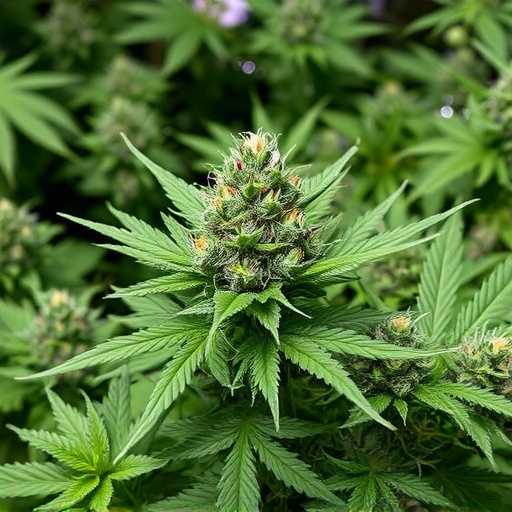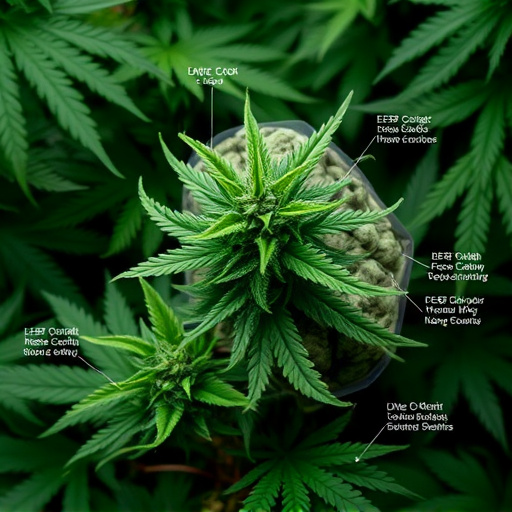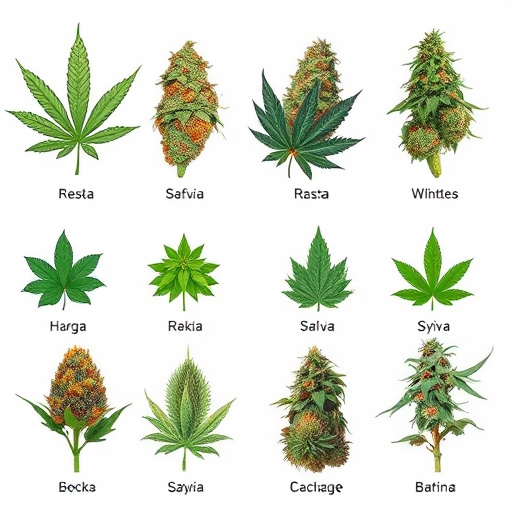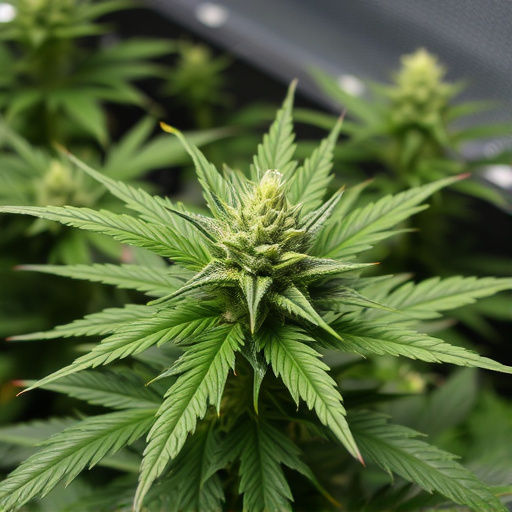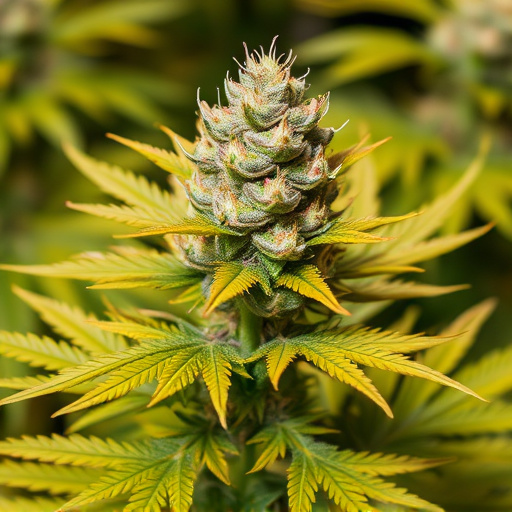High sativa strains of cannabis exhibit distinct floral, fruity, and citrusy aromas driven by terpene profiles influenced by genetics and environmental factors like temperature, humidity, and light. Extractions methods such as solvent-based and CO2 supercritical fluid techniques play a crucial role in preserving and enhancing these unique aroma characteristics, ensuring the sensory appeal and potential therapeutic benefits of high sativa strains.
Unraveling the intricate world of cannabis aroma involves exploring three key elements. First, understand the genetic composition and terpene profile, which forms the aromatic foundation of high sativa strains. Second, consider environmental factors that influence terpene development in various growing conditions. Lastly, examine extraction methods crucial for preserving and enhancing the delicate aromas inherent to premium sativas. These factors collectively shape the diverse and captivating scents we associate with cannabis.
- Genetic Composition and Terpene Profile: The Foundation of Cannabis Aroma
- Environmental Factors: How terps develop in different growing conditions
- Extraction Methods: Their impact on preserving and enhancing aroma profiles of high sativa strains
Genetic Composition and Terpene Profile: The Foundation of Cannabis Aroma

The genetic composition and terpene profile of cannabis plants are the foundation of their unique aromas. Each strain, whether a high sativa or indica hybrid, carries its own distinct flavor and fragrance traits determined by its DNA. Sativa strains, known for their energizing effects, often exhibit floral, fruity, and citrus notes due to specific terpene combinations. Terpenes are aromatic compounds that work synergistically with cannabinoids like THC and CBD to create the overall sensory experience of cannabis.
Varieties rich in myrcene, a common terpene associated with earthy and musky scents, tend to have more relaxing effects characteristic of many indica strains. In contrast, high levels of limonene, responsible for citrusy aromas, are linked to uplifting and energizing experiences often found in sativas. The interplay between these genetic factors and terpene profiles ultimately shapes the diverse range of cannabis aromas we experience today.
Environmental Factors: How terps develop in different growing conditions
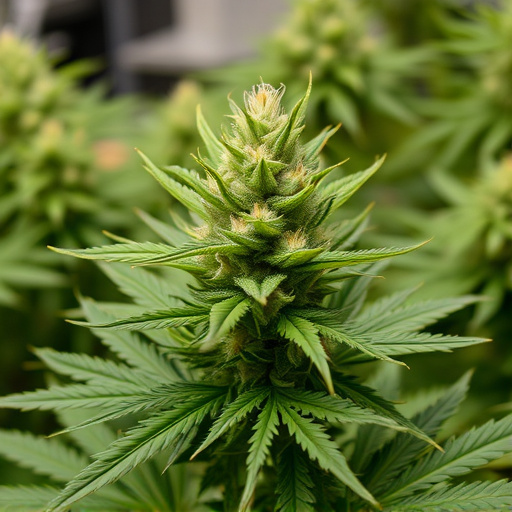
The development of cannabis terpenes, responsible for the distinct aroma and flavor profiles, is heavily influenced by environmental factors during cultivation. These volatile organic compounds (VOCs) are produced by plants as a defense mechanism and play a crucial role in attracting pollinators or repelling predators. In the context of high sativa strains known for their uplifting and energetic effects, environmental conditions like temperature, humidity, and light intensity can significantly shape terpene production.
For instance, warmer temperatures generally encourage the synthesis of more diverse terpenes, while cooler climates might lead to higher concentrations of specific compounds. Humidity levels also impact terpene development; higher humidity can result in richer, more intense aromas, whereas drier conditions may produce lighter, more subtle fragrances. Additionally, varying light exposure during the growing cycle affects terpene profiles, with different light intensities and durations influencing the expression of various terpenes, ultimately contributing to the unique sensory experiences associated with high sativa strains.
Extraction Methods: Their impact on preserving and enhancing aroma profiles of high sativa strains
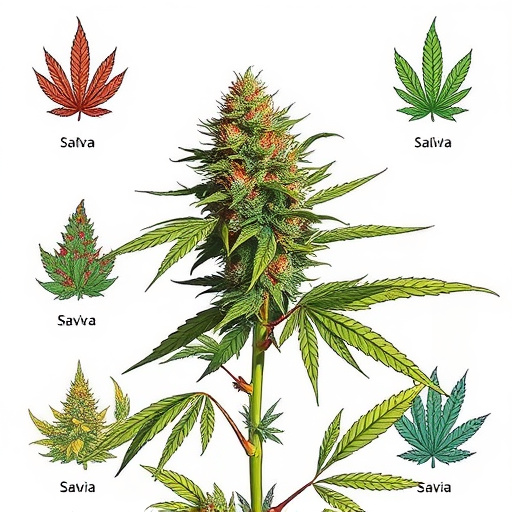
The extraction methods employed play a pivotal role in preserving and enhancing the intricate aroma profiles associated with high sativa strains. These techniques, ranging from solvent-based extractions to CO2 supercritical fluid extraction, significantly influence the final product’s quality and flavor characteristics. Solvent-based processes, such as ethanol or butane extraction, meticulously isolate terpenes and cannabinoids while ensuring a consistent and potent concentration in the extracted material.
On the other hand, methods like CO2 supercritical fluid extraction offer a more gentle approach, capturing the delicate aroma compounds intact. This process allows for the preservation of rare and valuable terpenes that contribute to the unique scent and potential therapeutic benefits of high sativa strains. By understanding and selecting appropriate extraction techniques, cannabis producers can ensure that the aromatic nuances of these strains are not only preserved but amplified, delivering a truly exceptional sensory experience.
The unique aroma of cannabis, particularly in high sativa strains, is a complex interplay between genetic composition, environmental factors, and extraction methods. Understanding these determinants allows enthusiasts and cultivators alike to appreciate the intricate synthesis of terpenes and cannabinoids that contribute to the diverse and delightful scents we experience. By recognizing how each factor influences the terpene profile, we can better navigate and enjoy the vast array of aromatic profiles offered by high sativa strains.





